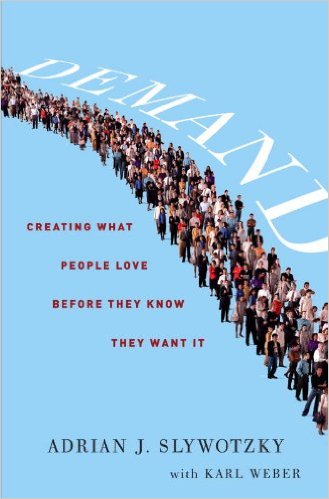Demand: Creating What People Love Before They Know They Want It

Working on the new DVDs (Psychology of SharePoint Adoption and Engagement, Nine Keys to SharePoint Success) and the SharePoint Tutor (SharePoint Shepherd’s Guide Corporate Edition) I’ve gotten quite curious about how demand is created and how some products sell well while others don’t. I’ve gotten a healthy appreciation for the value of marketing – if a consumer doesn’t know you exist they can’t buy you. However, I knew that something else was missing. The book Demand describes a set of keys that Adrian Slywotzky believes create products that will have great demand – from NetFlix to Amazon.com and beyond.
Slywotzky believes there are six things all demand creators do:
- Make it Magnetic – Create an emotional connection to the product or service. Create a product that has some special, unique value.
- Fix the Hassle Map – Life is filled with hassles. The more hassles that your product solves and the fewer that it creates the lower the friction between people and buying your product. The less friction the more purchasing.
- Build a Complete Backstory –It’s not enough to have a product that’s not supported by the right back end systems. Consider the iPod. What’s the real value? The ability to manage and acquire music – and that’s the job of iTunes and the iTunes store. You can’t build one part of the solution without the other.
- Find the Triggers – Triggers are what gets people to take action. They’re notoriously difficult to create. In consulting I say that I have no true competitors except inaction. I seriously don’t view any other SharePoint consultants as a real competitor. I really only compete with the client deciding not to do the project or to do it internally.
- Build a Steep Trajectory – This is how the product improves over time. The greater the rate of improvement the greater the trajectory.
- De-Average – Realize that everyone is unique and has their own needs, desires, and hassle maps. This is customization ala The One to One Future.
The book is sprinkled with helpful, and reassuring, nuggets. For instance, Demand speaks of how great demand creators imitate (copy) in places that aren’t strategic. For instance, NetFlix copying amazon’s web design. It’s a simple example on how something that was being done right could be copied and adapted to minimize investments in an area.
Incidentally, the book also speaks of the relentless testing that goes into refining other aspects. For instance, NetFlix’s obsession with creating a mailer that worked. So on the one hand it speaks of copying the non-critical items to business and absolutely creating the right solutions where it is critical to business. This in turn reminds me of Tom Peters’ (et all) book In Search of Excellence where there are numerous stories of how organizations obsessed about things that were non-obvious – for instance clean washrooms.
In some sense the obsession, or preoccupation if you prefer, with details that on the surface shouldn’t matter is a part of the genius of the book – and the demand creators. There are many things that are true but also counter intuitive. For instance, go to your favorite ecommerce site and start the checkout process – you’ll be more or less prevented from shopping the catalog and getting more items in your cart. Why? Because it turns out that if you have the opportunity to keep putting things in your cart you’re less likely to checkout. Truly good demand creators – the book asserts – will do the research to determine where things are counter intuitive and capitalize on those places to dramatically improve their demand.
If you’re struggling to sell a product, or trying to figure out why your service isn’t selling like it should – or if you’re even considering starting a business and are concerned with whether or not people will want to buy what you have to sell – Demand is a great book.
